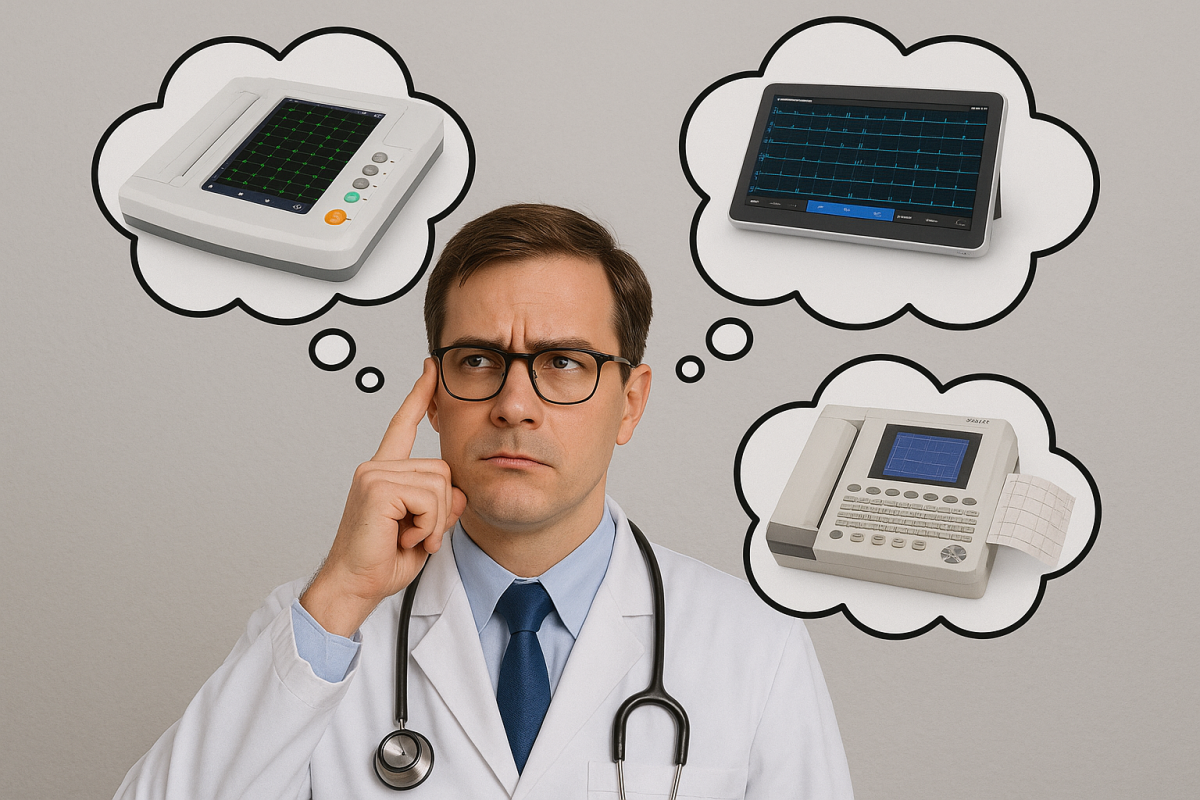When it comes to buying an ECG machine, most general practitioners ask a simple question:
“Will it let me bill medical aid?”
And the answer — at least for most 12-lead ECGs — is yes. Even the cheapest options, like the Contec ECG1212G, will get the job done on paper. But there’s a bigger question worth asking:
“What am I giving up by going cheap?”
Here’s a breakdown of what entry-level ECG machines offer — and where they fall short.
What You Get with a Budget ECG Machine
Devices like the Contec ECG1212G tick the basic boxes:
-
12-lead ECG with built-in thermal printer
-
Basic interpretation algorithm (usually Glasgow)
-
USB data export
-
Affordable price tag
That’s enough for many clinics to start billing for ECGs. If you only do an ECG once in a while, that might seem good enough.
But Here’s What You’re Missing
Low-cost ECG machines often lack key clinical features, including:
No QTc Measurement
QTc (especially Fridericia) is important for monitoring patients on certain psychiatric, cardiac, or antibiotic medications. Without it, you’re flying blind.
Limited Interpretation
These machines provide vague statements like “abnormal ECG” — with no detailed parameters or clinical context. This might be fine for screening, but it won’t give you confidence for complex cases.
No Integration or Backup
There’s usually no PC software, EMR compatibility, or Wi-Fi/cloud access. That means you’re printing, filing manually, and can’t store or retrieve reports easily.
Roll Paper Printing
Contec and similar models use narrow roll paper, which makes filing or faxing reports a hassle. Higher-end units use A4 or Z-fold formats, which specialists and hospitals prefer.
Workflow Matters More Than You Think
Cheaper ECG machines might seem like a win at checkout — but they can slow you down in day-to-day practice.
Here’s how your workflow takes a hit:
-
Manual-only output: No digital backup. You print and file by hand — no way to retrieve ECGs without scanning.
-
No sharing functionality: You can’t email results to specialists or include them in digital patient files.
-
Paper-only headaches: Narrow roll paper is harder to store, crumples easily, and doesn’t look professional on referrals.
-
Limited history access: Need to compare a previous ECG? You’d better hope someone filed it correctly.
Compare that with a mid-range machine:
-
ECGs are saved digitally and can be printed later or shared via email
-
Reports are clear, structured, and exportable
-
Easier data management means less admin and better record-keeping
In a busy practice, time is money — and better ECG workflow saves both.
So Should You Pay More?
It depends on your workflow.
If you rarely do ECGs and just want to bill for the procedure, an entry-level machine might work for now. But if you:
-
See cardiac or hypertensive patients regularly
-
Prescribe meds that require QTc monitoring
-
Refer patients to specialists
-
Want a smoother, more professional workflow
… then mid-range machines like the Edan SE-1200 Express, or newer tablet-based Wi-Fi models are well worth the investment.
| Model | QTc | Interpretation | Paper Format | Connectivity | Ideal For |
|---|---|---|---|---|---|
| Contec ECG1212G | ❌ | Basic only | Roll paper | USB only | Clinics needing basic billing |
| Edan SE-1200 Exp. | ✅ | Full (with QTc) | Z-fold | USB / optional WiFi | GPs doing ECGs weekly |
| Tablet ECG (Neo) | ✅ | Full + export | PDF only | WiFi + email | Mobile or cloud-based setups |
Ready to Compare Models?
We’ve curated a selection of ECG machines based on real-world GP needs — from budget to smart-value options.
View our full ECG machine range here
